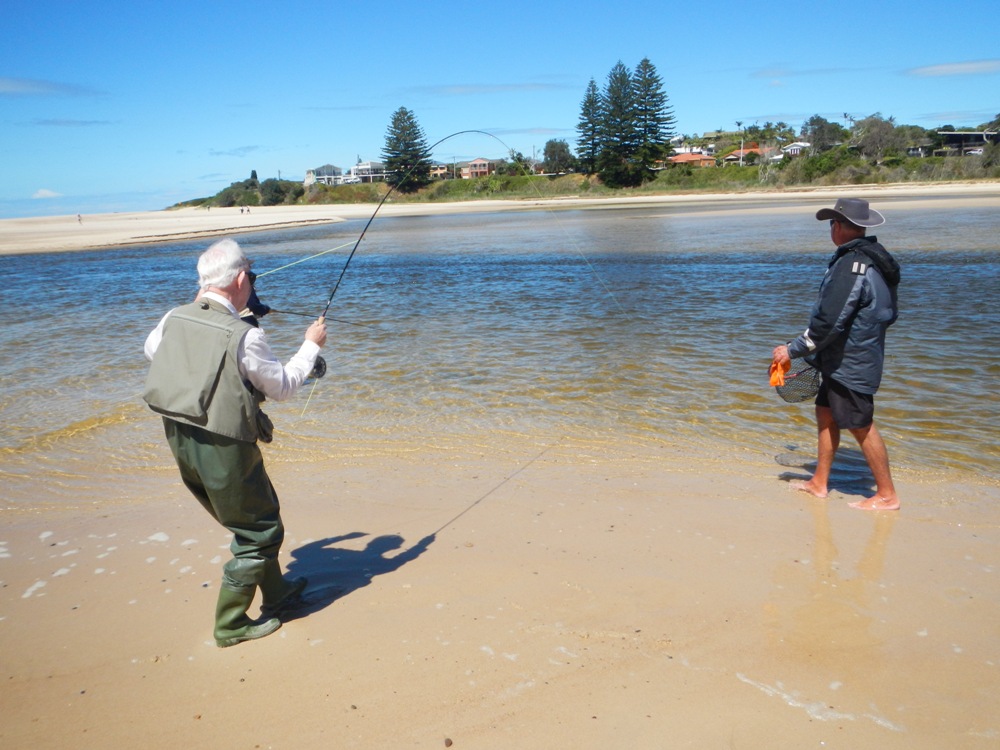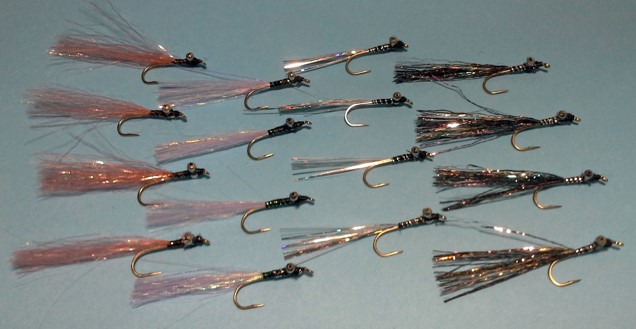Target Fish: Whiting, Bream, Flathead, Blackfish, Taylor and Mullet.
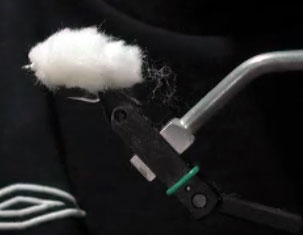
Bread Fly
Always have a few bread flies prepared and make sure you bring at least half a loaf of stale bread for burley – you can catch all sorts plus the burley will get things going. Make a couple from white deer hair to float (add some floatant) and a couple from Egg Yarn or McFlyfoam to slowly sink (as the burley does).
Make sure the bread flies are a combination of sinking and floating – so you can use them in tandem – the floater as an indicator – again not deep.
Weed Fly
I would make up a couple of Olive or Fluro Green Weed flies (Tiewell’s Ice Dubbing is the go) to be fished in tandem with the bread fly – especially if you are fishing around the bridge or any of the weed beds in Lake Cathie – the bream, blackfish, mullet and many others are just as likely to hit either. If you are really careful you could try fishing 3 flies – a sinking and 2 floaters in either variety.
The easiest way to attached the flies is to use an improved clinch knot tied onto the bend of the hook above. Cast repeatedly to the burley – a great target and get as close as you can – making sure the flies does do not drag.
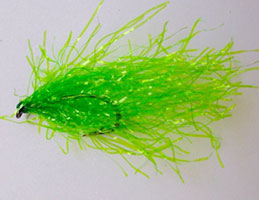
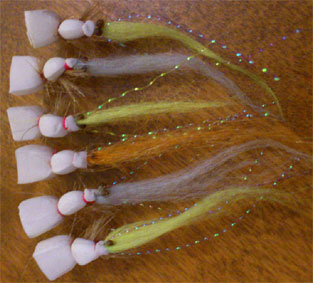
JOS Gurgler
The John O surface popper is excellent for all sorts of fish – in size 8 or 6. Note closed cell foam about 4mm thick is good (can glue 2 X 2mm sheets together), all sorts of colours and a bit of sparkle on a few.
You can fish these using a heavier tippet up to 14lb – so they track straight and can use a double handed retrieve (fast or steady is good) with the rod stuck under your arm pit.
A simple alternative can be Peter Morse’s Whiting Popper (PDF version).
A good trick with both these flies is to place a little lead weight (not too much) towards the bend of the hook – make the tail sit in the water. Play with the retrieve – if the straight track is not working – make ’em bloop, a couple strong strips and pause or figure 8 and make ’em walk the dog.
Clouser Deep Minnow
This is a great all round fly for the saltwater and a must for flathead – there are supposed to be a few around – in sizes 1 to 4 – note the heavier eyes will make them sit on the bottom and push up little puffs of sand as you strip and pause – on the retrieve. Give ’em time to sink to the bottom – can be used with an intermediate line.
Good colours are White over white, Yellow over white or Chartreuse over white (as in the tying instructions below). Fish these around and over the weed beds.
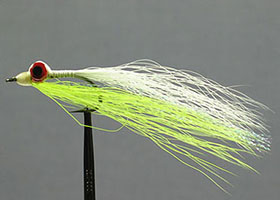
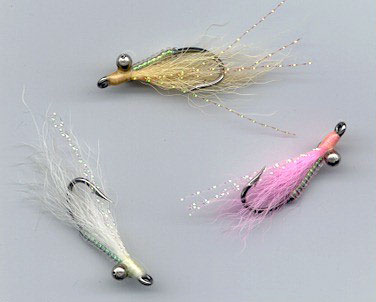
Crazy Charlie
More popularly used for bonefish, the Crazy Charlie is also good for catching other saltwater fish to go for Clousers (above).
The bead chain eyes tied on top of the hook make the fly ride inverted to this end.
Crazy Charlies can be tied in any colour under the sun and some of the most popular are tan, white, pink, chartreuse and brown. This is really more of a style of fly than a particular pattern and materials can be mixed and matched according to the anglers needs.
“All Clear” Eyes Fly
Make these in smaller sizes, i.e. 6 to 10, just ask Dawn, this is her go to fly for the salt – another must have fly for Lake Cathie. You need to make these early and leave in the sun for a few days to firm up – they never go hard – but make sure you final coat them with Sally Hanson’s Hard as Nails.
There are a lot of very small bait fish around at the moment and these are the very best imitation – the smaller and flatter (tubular) the better, sometimes you need to trim the tail back but you can do this on the water – just remember to take your stainless scissors.


Gotcha
A great fly for flathead (in pink), whiting (yellow over white) and bream (green over silver).
Polar Fibre Minnow
A great mid size mid water fly – in sizes 1 to 6 – colours white over white, Olive over white or Tan and Olive over Shrimp. Note these are great flies for all sorts of fishes – the white polar fibre goes fairly clear in the water and moves similar to the action of bait fish. Fish these with a floating or intermediate line and vary the retrieve – the pause catches fish.
Tying instructions for The Polar Fibre Minnow, All Clear Eyes Fly, the Bread Fly and Weed Fly can all be found on the Central Coast Fly Rodders web site.
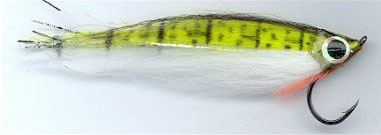
Casting Tip – Remove Slack from the Fly Line before the Cast
Casting in the saltwater and the fresh it is important to minimise the disturbance of the line on the water when starting to recast – this is even more critical in the salt, as we use heavier lines and larger flies – so it is even easier to spook the fish.
There are 2 methods to do this:
- Point and Cast – Point the rod tip at the fly – slowly pull the line until the slack is removed – then and only then should you lift the rod and attempt the back cast.
- Use the Roll to Start – If there is line on the water and you need to recast quickly – ie at a fish – use the roll cast, as the first back cast, to lift the line from the water.
Again start moving the line slowly at the start lift the rod to the side and back, as you would for a roll cast to remove the slack – then go into your normal over head cast. The roll cast used in this situation is great to get a sinking or intermediate line to the surface so you can complete a normal over head cast.
So there are two benefits to removing the slack from the line before you attempt a cast – with no slack in the line the rod loads early so you can recast quickly with a minimum of false casts and the disturbance on the water has been reduced and will not scare the fish.
